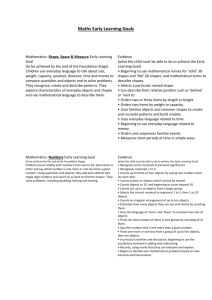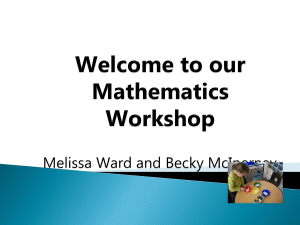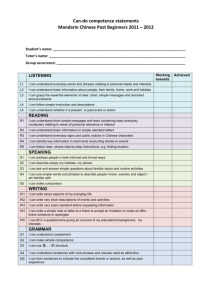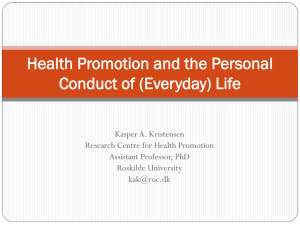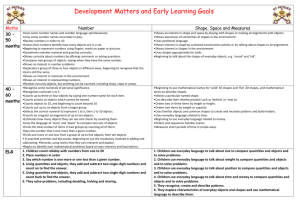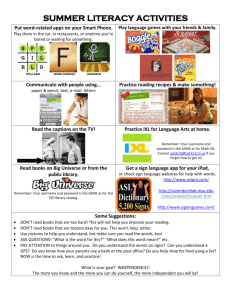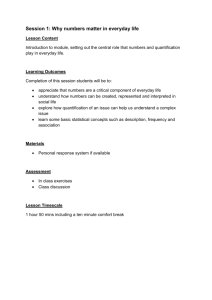Kindergarten Pacing GUIDE
advertisement
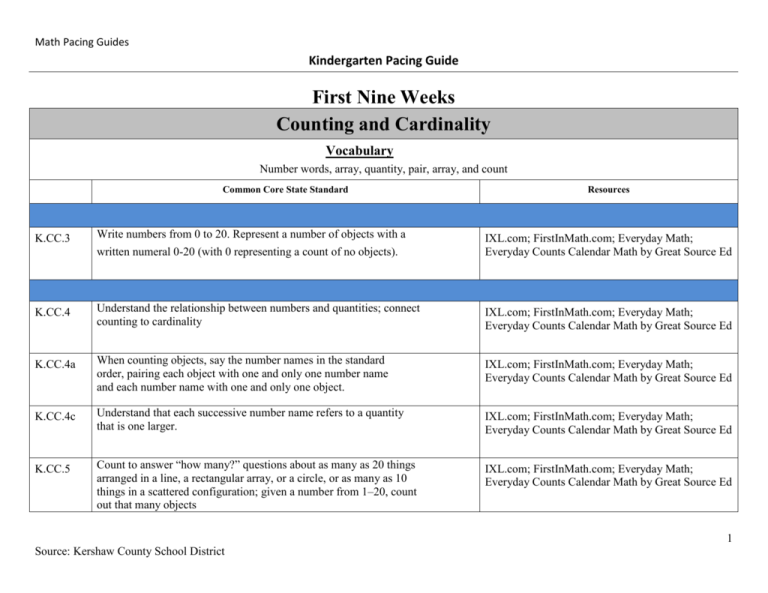
Math Pacing Guides Kindergarten Pacing Guide First Nine Weeks Counting and Cardinality Vocabulary Number words, array, quantity, pair, array, and count Common Core State Standard Resources K.CC.3 Write numbers from 0 to 20. Represent a number of objects with a written numeral 0-20 (with 0 representing a count of no objects). IXL.com; FirstInMath.com; Everyday Math; Everyday Counts Calendar Math by Great Source Ed K.CC.4 Understand the relationship between numbers and quantities; connect counting to cardinality IXL.com; FirstInMath.com; Everyday Math; Everyday Counts Calendar Math by Great Source Ed K.CC.4a When counting objects, say the number names in the standard order, pairing each object with one and only one number name and each number name with one and only one object. IXL.com; FirstInMath.com; Everyday Math; Everyday Counts Calendar Math by Great Source Ed K.CC.4c Understand that each successive number name refers to a quantity that is one larger. IXL.com; FirstInMath.com; Everyday Math; Everyday Counts Calendar Math by Great Source Ed K.CC.5 Count to answer “how many?” questions about as many as 20 things arranged in a line, a rectangular array, or a circle, or as many as 10 things in a scattered configuration; given a number from 1–20, count out that many objects IXL.com; FirstInMath.com; Everyday Math; Everyday Counts Calendar Math by Great Source Ed 1 Source: Kershaw County School District Math Pacing Guides Kindergarten Pacing Guide Operations and Algebraic Thinking Vocabulary Join, add, separate, same amount as, equal, less, more, total, and subtract Common Core State Standard Resources Understand addition as putting together and adding to, and understand subtraction as taking apart and taking from. K.OA.1 Represent addition and subtraction with objects, fingers, mental images, drawings2, sounds (e.g., claps), acting out situations, verbal explanations, expressions, or equations. IXL.com; FirstInMath.com; Everyday Math; Everyday Counts Calendar Math by Great Source Ed Measurement and Data Vocabulary Same amount, length, more of, less of, longer, taller, shorter, color words, small, big, smooth, bumpy, rough, flat, and same as, ie other descriptive words. Common Core State Standard Resources Describe and compare measurable attributes. K.MD.1 Describe measurable attributes of objects, such as length or weight. Describe several measurable attributes of a single object. IXL.com; FirstInMath.com; Everyday Math; Everyday Counts Calendar Math by Great Source Ed Classify objects and count the number of objects in categories K.MD.3 Classify objects into given categories; count the numbers of objects in each category and sort the categories by count.3 Geometry K IXL.com; FirstInMath.com; Everyday Math; Everyday Counts Calendar Math by Great Source Ed 2 Source: Kershaw County School District Math Pacing Guides Kindergarten Pacing Guide Geometry Vocabulary Square, circle, triangle, rectangle, oval, cube, cylinder, cone, sphere, rectangular prism, flat, solid, side, curve, corner, angle, edge, face, above, below, next to, same as, different, compare. Common Core State Standard Resources K.G.1 Identify and describe shapes (squares, circles, triangles, rectangles, hexagons, cubes, cones, cylinders, and spheres) Describe objects in the environment using names of shapes, and IXL.com; FirstInMath.com; Everyday Math; describe the relative positions of these objects using terms such as Everyday Counts Calendar Math by Great Source Ed above, below, beside, in front of, behind, and next to. K.G.2 Correctly name shapes regardless of their orientations or overall size. K.G.5 Analyze, compare, create, and compose shapes. Model shapes in the world by building shapes from components (e.g., IXL.com; FirstInMath.com; Everyday Math; sticks and clay balls) and drawing shapes. Everyday Counts Calendar Math by Great Source Ed IXL.com; FirstInMath.com; Everyday Math; Everyday Counts Calendar Math by Great Source Ed 3 Source: Kershaw County School District Math Pacing Guides Kindergarten Pacing Guide Second Nine Weeks Review standards previously taught Counting and Cardinality Vocabulary Number words, array, quantity, pair, array, and count Common Core State Standard Resources Know number names and the count sequence K.CC.1 Count to 100 by ones and by tens. IXL.com; FirstInMath.com; Everyday Math; Everyday Counts Calendar Math by Great Source Ed K.CC.2 Count forward beginning from a given number within the known sequence (instead of having to begin at 1). IXL.com; FirstInMath.com; Everyday Math; Everyday Counts Calendar Math by Great Source Ed Count to tell the number of objects K.CC.4 Understand the relationship between numbers and quantities; connect counting to cardinality IXL.com; FirstInMath.com; Everyday Math; Everyday Counts Calendar Math by Great Source Ed K.CC.4b Understand that the last number name said tells the number of objects counted. The number of objects is the same regardless of their arrangement or the order in which they were counted. Identify whether the number of objects in one group is greater than, less than, or equal to the number of objects in another group, e.g., by using matching and counting strategies.1 Compare two numbers between 1 and 10 presented as written numerals. IXL.com; FirstInMath.com; Everyday Math; Everyday Counts Calendar Math by Great Source Ed K.CC.6 K.CC.7 IXL.com; FirstInMath.com; Everyday Math; Everyday Counts Calendar Math by Great Source Ed IXL.com; FirstInMath.com; Everyday Math; Everyday Counts Calendar Math by Great Source Ed 4 Source: Kershaw County School District Math Pacing Guides Kindergarten Pacing Guide Operations and Algebraic Thinking Vocabulary Join, add, separate, same amount as, equal, less, more, total, and subtract Resources Common Core State Standard Understand addition as putting together and adding to, and understand subtraction as taking apart and taking from. K.OA.2 Solve addition and subtraction word problems, and add and subtract within 10, e.g., by using objects or drawings to represent the problem. IXL.com; FirstInMath.com; Everyday Math; Everyday Counts Calendar Math by Great Source Ed Understand addition as putting together and adding to, and understand subtraction as taking apart and taking from. K.OA 4 For any number from 1 to 9, find the number that makes 10 when added to the given number, e.g., by using objects or drawings, and record the answer with a drawing or equation. IXL.com; FirstInMath.com; Everyday Math; Everyday Counts Calendar Math by Great Source Ed Numbers and Operations on Base Ten Vocabulary Number words, leftovers, units, more of ,and ten frame Common Core State Standard K.NO.1 Resources Work with numbers 11-19 to gain foundations for place value. Compose and decompose numbers from 11 to 19 into ten ones and IXL.com; FirstInMath.com; Everyday Math; some further ones, e.g., by using objects or drawings, and record each Everyday Counts Calendar Math by Great Source Ed composition or decomposition by a drawing or equation (e.g., 18 = 10 + 8); understand that these numbers are composed of ten ones and one, two, three, four, five, six, seven, eight, or nine ones. 5 Source: Kershaw County School District Math Pacing Guides Kindergarten Pacing Guide Measurement and Data Vocabulary Same amount, length, more of, less of, longer, taller, shorter, color words, small, big, smooth, bumpy, rough, flat, and same as, ie other descriptive words. Describe and compare measurable attributes. K.MD. 2 Directly compare two objects with a measurable attribute in common, IXL.com; FirstInMath.com; Everyday Math; to see which object has “more of”/“less of” the attribute, and describe Everyday Counts Calendar Math by Great Source Ed the difference. For example, directly compare the heights of two children and describe one child as taller/shorter. 6 Source: Kershaw County School District Math Pacing Guides Kindergarten Pacing Guide Third Nine Weeks Review standards previously taught Operations and Algebraic Thinking Vocabulary Join, add, separate, same amount as, equal, less, more, total, and subtract Common Core State Standard Resources Understand addition as putting together and adding to, and understand subtraction as taking apart and taking from. K.OA 3 Decompose numbers less than or equal to 10 into pairs in more than one way, e.g., by using objects or drawings, and record each decomposition by a drawing or equation (e.g., 5 = 2 + 3 and 5 = 4 + 1). IXL.com; FirstInMath.com; Everyday Math; Everyday Counts Calendar Math by Great Source Ed Geometry Vocabulary Square, circle, triangle, rectangle, oval, cube, cylinder, cone, sphere, rectangular prism, flat, solid, side, curve, corner, angle, edge, face, above, below, next to, same as, different, compare. Common Core State Standard K.G 3 K.G 4 Resources Identify and describe shapes (squares, circles, triangles, rectangles, hexagons, cubes, cones, cylinders, and spheres). Identify shapes as two-dimensional (lying in a plane, “flat”) or three dimensional IXL.com; FirstInMath.com; Everyday Math; (“solid”). Everyday Counts Calendar Math by Great Source Ed Analyze, compare, create, and compose shapes Analyze and compare two- and three-dimensional shapes, in IXL.com; FirstInMath.com; Everyday Math; different sizes and orientations, using informal language to describe Everyday Counts Calendar Math by Great Source Ed their similarities, differences, parts (e.g., number of sides and vertices/“corners”) and other attributes (e.g., having sides of equal 7 Source: Kershaw County School District Math Pacing Guides Kindergarten Pacing Guide length). Fourth Nine Weeks Review standards previously taught Operations and Algebraic Thinking Vocabulary Join, add, separate, same amount as, equal, less, more, total, and subtract K.OA.5 Common Core State Standard Resources Understand addition as putting together and adding to, and understand subtraction as taking apart and taking from. Fluently add and subtract within 5. Geometry Vocabulary Square, circle, triangle, rectangle, oval, cube, cylinder, cone, sphere, rectangular prism, flat, solid, side, curve, corner, angle, edge, face, above, below, next to, same as, different, compare. K. G.6 Common Core State Standard Resources Identify and describe shapes (squares, circles, triangles, rectangles, hexagons, cubes, cones, cylinders, and spheres). Compose simple shapes to form larger shapes. For example, “Can you join these two triangles with full sides touching to make a rectangle?” 8 Source: Kershaw County School District
